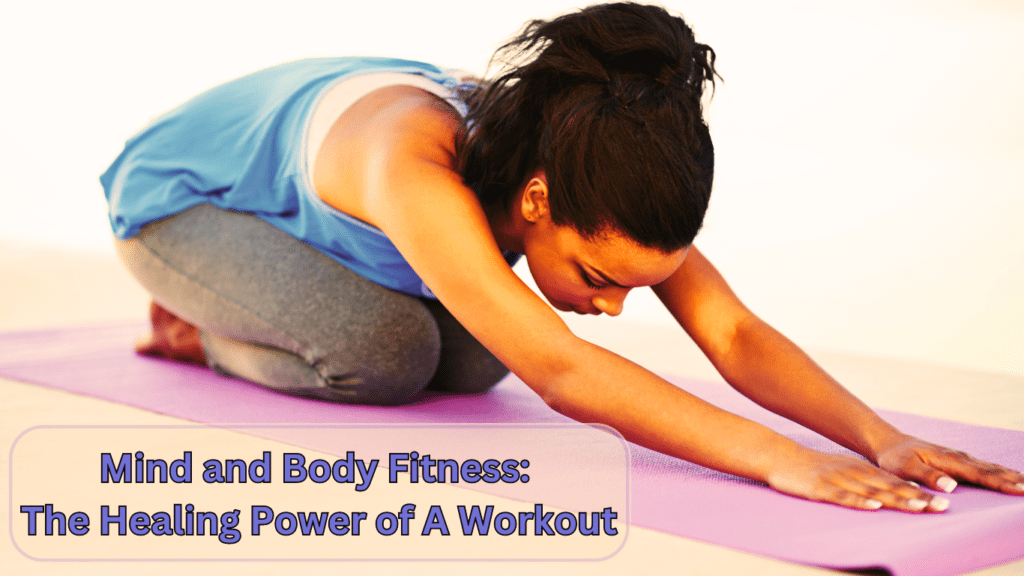Leg Workout for Lower Back Pain: Strengthening Your Foundation
Hey there, fitness enthusiasts! Today, we’re diving deep into a topic that’s close to my heart (and back): leg workout for lower back pain. Now, before you click away thinking, “But Henry, I thought leg day was just for, well, legs,” hold on to your gym towels because I’m about to drop some knowledge bombs that’ll make you rethink everything.
Lower back pain is like that unwanted guest who just won’t leave the party. It creeps up on you when you least expect it, whether you’re sitting at your desk or bending down to pick up your gym bag. But fear not, my fellow warriors, because the solution might just lie in the muscles right below your waistline.
Let’s talk about exercise, shall we? I know, I know, the thought of hitting the gym after a long day at work might seem as appealing as a root canal, but trust me on this one. Exercise is your best buddy when it comes to managing lower back pain. And when I say exercise, I’m not just talking about any old stroll on the treadmill. I’m talking about targeted, purposeful movements that’ll have your muscles singing “Hallelujah!”
Now, why leg workouts, you ask? Well, picture this: your lower back is like the foundation of a house. If the foundation is weak, the whole darn thing comes crumbling down. But strengthen those legs, my friends, and you’ve got yourself a sturdy base that can support even the wildest of dance parties (trust me, I’ve seen it).
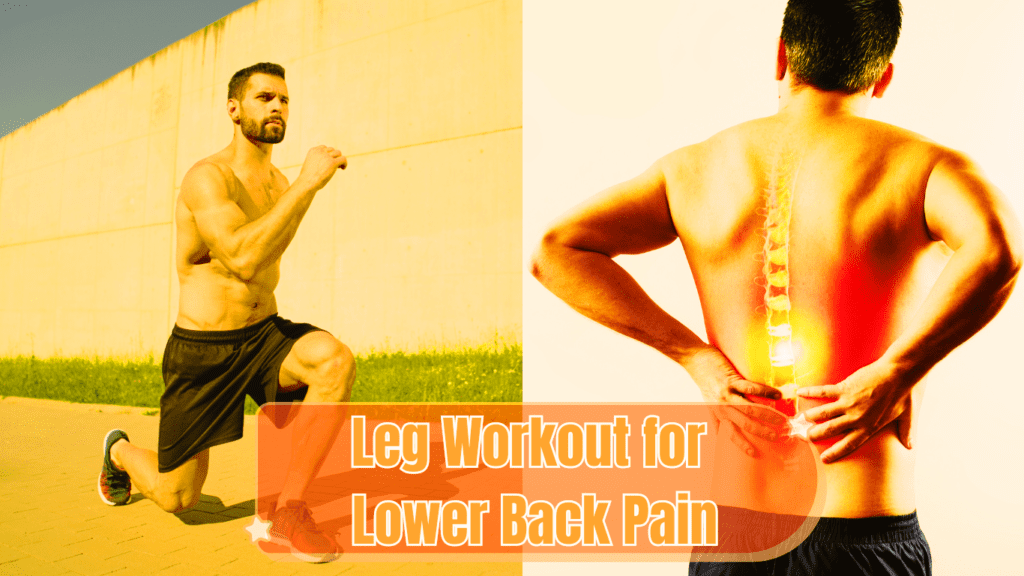
You see, when you work those leg muscles, you’re not just building strength in your stems. Oh no, you’re also giving your lower back some much-needed TLC. Think of it as a symbiotic relationship where everybody wins. By targeting key muscle groups like the glutes, hamstrings, and quads, you’re essentially giving your lower back the support it needs to stand tall and proud.
But Henry, you might be thinking, won’t leg workouts make my lower back pain worse? Ah, my dear skeptic, that’s where the magic happens. When done correctly, leg exercises can actually alleviate lower back pain by taking some of the pressure off those overworked lumbar muscles.
Subscribe And Get Our Free E-Book:Unlocking The Power Of Nutrition-Supplements, Substitutes, and Superfoods!
Imagine your lower back as a tired parent carrying a load of groceries. Now, imagine your legs swooping in like a superhero sidekick (okay, maybe I couldn’t resist the superhero reference) to lend a helping hand. By strengthening your legs, you’re essentially lightening the load on your lower back, allowing it to relax and unwind.
So, what are these magical leg exercises, you ask? Well, my friends, you’re in for a treat because I’ve got a whole arsenal of moves up my sleeve (metaphorically speaking, of course). From squats to lunges to deadlifts, there’s a leg exercise for every fitness level and preference.
But here’s the kicker: form is key. I repeat, form is key. You could do a thousand squats a day, but if your form resembles that of a baby giraffe learning to walk, you’re not doing yourself any favors. So, take your time, focus on proper technique, and listen to your body. If something feels off, don’t push through the pain like a stubborn mule (trust me, I’ve been there). Instead, take a step back, reassess, and make adjustments as needed.
And don’t forget to mix things up every now and then. Your body is a smart cookie, and it thrives on variety. So, throw in some Bulgarian split squats, throw in some step-ups, heck, throw in some dance moves if that’s your jam. The key is to keep those leg muscles guessing and growing.
Understanding the Causes of Lower Back Pain Chart
| Common Causes of Lower Back Pain | Description | Effects on Lower Back | Prevention and Management |
|---|---|---|---|
| Poor Posture | Slouching or sitting incorrectly for extended periods | Strain on spinal structures | Practice good posture habits, use ergonomic furniture, stretch regularly |
| Weak Core Muscles | Lack of strength in abdominal and back muscles | Insufficient support | Incorporate core-strengthening exercises, such as planks and bridges |
| Muscle Imbalances | Uneven distribution of muscle strength and flexibility | Altered movement patterns | Address muscle imbalances through targeted exercises and stretches |
| Weak Leg Muscles | Lack of strength in leg muscles, especially hamstrings and glutes | Added strain on lower back | Include leg-strengthening exercises, such as squats and lunges |
So there you have it, folks: leg workout for lower back pain in a nutshell (or should I say, in a squat rack?). Remember, Rome wasn’t built in a day, and neither is a pain-free back. But with patience, perseverance, and a killer leg routine, you’ll be standing tall and proud in no time.
Understanding Lower Back Pain
Alright, folks, let’s dive deeper into today’s topic of leg workout for lower back pain. But before we jump into the nitty-gritty of leg exercises, let’s take a moment to understand what exactly causes that pesky lower back pain in the first place.
Now, I’m sure we’ve all experienced it at some point: that dull ache in the lower back that just won’t quit. But what’s causing it? Well, my friends, there are a few common culprits to consider.
First up, we’ve got poor posture. Picture yourself slouched over your desk like a melting candle (not a pretty sight, I know). Over time, this hunched-over position can wreak havoc on your lower back, causing those muscles to scream out in protest.
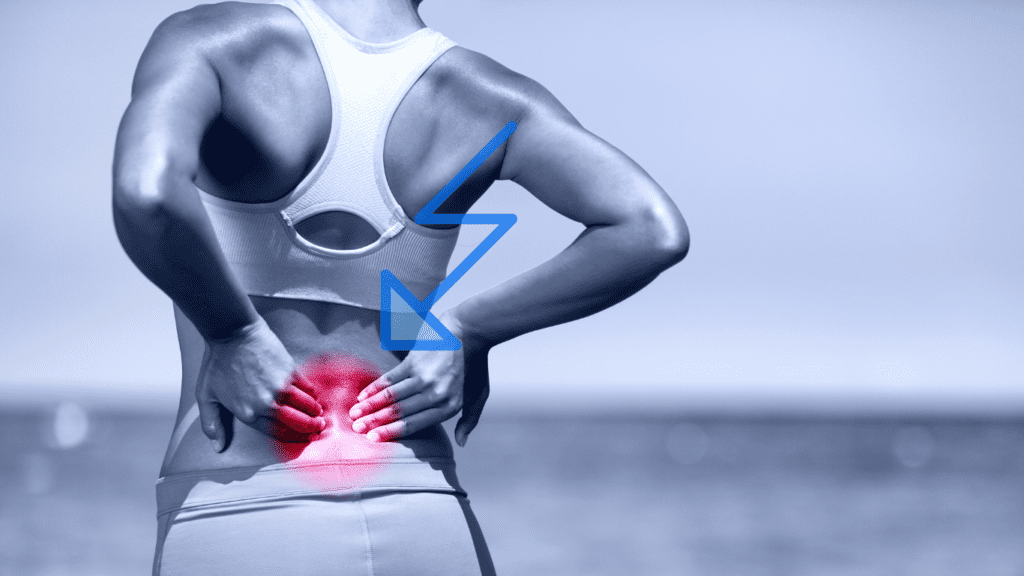
Next on the list, we’ve got weak core muscles. Now, your core is like the trunk of a tree – it’s what holds everything together. But if those core muscles are as weak as day-old oatmeal, your lower back ends up picking up the slack, leading to all sorts of aches and pains.
And let’s not forget about muscle imbalances. You see, our bodies are a finely tuned machine, with every muscle working together in perfect harmony…or at least, they’re supposed to. But throw in a few imbalances here and there, and suddenly, you’ve got one muscle doing all the heavy lifting while the others kick back and relax (not cool, guys, not cool).
But here’s where things get interesting: did you know that weak leg muscles can actually exacerbate lower back pain? It’s true! You see, our bodies are like a chain, with each link relying on the other to stay strong and stable. And if one link in that chain – say, your legs – is weaker than the rest, it puts extra strain on the other links, including your poor, unsuspecting lower back.
But fear not, my friends, because there’s hope on the horizon. By targeting those leg muscles with some killer exercises, you’re essentially giving your lower back the support it needs to shine. It’s like giving your back a little vacation while your legs pick up the slack (talk about teamwork!).
So, how exactly do strong legs help alleviate lower back pain? Well, it all comes down to mechanics, my friends. You see, when you strengthen your leg muscles, you’re essentially improving your body’s ability to support itself. Imagine your legs as the sturdy pillars of a bridge, holding everything together with ease. Now, imagine those pillars starting to crumble – not a pretty picture, is it? By strengthening your legs, you’re essentially reinforcing those pillars, making them stronger and more resilient to the stresses of everyday life.
But that’s not all. Strong legs also help improve your overall posture, taking some of the pressure off your lower back in the process. It’s like giving your back a little lift, allowing it to stand tall and proud without feeling like it’s carrying the weight of the world on its shoulders (or, in this case, its lumbar muscles).
The Best Singe-Leg Exercises for Lower Back Pain
Benefits of Doing Leg Workout for Lower Back Pain
First and foremost, incorporating leg exercises into your routine can work wonders for lower back pain relief. I’m talking about saying goodbye to those morning groans as you roll out of bed and hello to feeling like a million bucks (or at least a solid hundred).
But why, you might wonder? Well, it all comes down to mechanics, my friends. You see, when you strengthen those leg muscles, you’re essentially building a solid foundation for your entire body to stand on. It’s like giving your spine a little extra support, allowing it to do its job without feeling like it’s carrying the weight of the world (or, in this case, your torso) on its shoulders.
But wait, there’s more! Strengthening your leg muscles can also work wonders for your posture. Picture yourself standing tall and proud like a majestic oak tree, with nary a slouch in sight. That’s the power of strong leg muscles, my friends. They help keep your spine in alignment, reducing the strain on your lower back and preventing those dreaded aches and pains.
And let’s not forget about stability. You see, our bodies are like finely tuned machines, with every muscle working together to keep us upright and balanced. But when those leg muscles are weak, it’s like trying to balance on a tightrope while wearing roller skates – not exactly a recipe for success. By strengthening your legs, you’re essentially giving yourself a solid base to work from, making it easier to stay stable and upright no matter what life throws your way.
But Henry, you might be thinking, what about overall spinal alignment? Ah, my dear reader, that’s where the magic happens. You see, when your leg muscles are strong and firing on all cylinders, they help keep your spine in proper alignment, reducing the risk of those pesky misalignments that can lead to lower back pain. It’s like having your own personal chiropractor on call 24/7, minus the hefty bill at the end of the month.
So, there you have it, folks: the many benefits of leg workout for lower back pain. From pain relief to improved posture to better stability and spinal alignment, the perks are enough to make even the most dedicated couch potato want to hit the gym.
Key Principles for Leg Workout for Lower Back Pain Relief
Now, before you strap on those sneakers and hit the gym floor, there are a few key principles you’ll want to keep in mind to ensure a safe and effective workout.
First and foremost, let’s talk about form. I cannot stress this enough, folks – proper form is absolutely crucial when it comes to preventing injury and getting the most out of your workout. I’m talking about keeping those knees aligned, maintaining a neutral spine, and engaging those core muscles like your life depends on it (spoiler alert: it kinda does). So, before you start busting out those squats and lunges like a seasoned pro, take a moment to check your form in the mirror. Trust me, your lower back will thank you later.
Next up, let’s talk about gradual progression. Now, I know it can be tempting to jump straight into the deep end and crank out a hundred reps of every exercise under the sun, but trust me when I say that’s a one-way ticket to Pain Town (population: you). Instead, start slow and gradually increase the intensity and volume of your workouts over time. It’s like building a house – you wouldn’t start with the roof, would you? (Unless you’re some kind of DIY superhero, in which case, more power to you).
And last but certainly not least, let’s talk about listening to your body. Now, I know we’ve all heard the phrase “no pain, no gain,” but let me tell you something, my friends – that’s a load of hogwash (pardon my French). Pain is your body’s way of saying, “Hey there, buddy, something’s not quite right here.” So, if you feel so much as a twinge in your lower back during a workout, take a step back and reassess. It’s better to skip a few reps now than to be laid up on the couch with an ice pack strapped to your back later.
Essential Principles for Safe Leg Workouts Chart
| Key Principles for Safe Leg Workouts | Description | Importance | Additional Tips |
|---|---|---|---|
| Proper Form | Maintain correct posture and alignment during exercises | Prevents injury, ensures effective muscle engagement | Focus on breathing, engage core muscles |
| Gradual Progression | Increase intensity and volume of workouts gradually over time | Reduces risk of overexertion, promotes long-term progress | Monitor recovery, track progress |
| Listening to Your Body | Pay attention to signs of discomfort or pain, adjust workouts accordingly | Prevents injury, promotes workout sustainability | Rest and recovery are key, prioritize quality over quantity |
| Warm-up and Cool-down | Prepare muscles for exercise and facilitate recovery post-workout | Prevents injury, enhances flexibility and mobility | Incorporate dynamic stretching and foam rolling |
So, there you have it, folks: the key principles of leg workout for lower back pain. Keep your form in check, ease into your workouts, and above all, listen to your body. Oh, and don’t forget to have a little fun along the way. After all, what’s the point of getting fit if you’re not enjoying the journey?
Recommended Leg Exercises
Alright, let’s dive into the meat and potatoes of our leg workout for lower back pain adventure: the exercises. Now, I’ve got a whole arsenal of moves up my sleeve (metaphorically speaking, of course), so buckle up and get ready to feel the burn.
First up, we’ve got everyone’s favorite: squats. Not only do squats target those glorious quadriceps, but they also work wonders for your hamstrings, glutes, and even your calves. Plus, they’re super versatile, so whether you’re pumping iron in the gym or busting out reps in your living room, squats are a must-have in any lower back pain-fighting arsenal.
Next on the list, we’ve got lunges. Now, lunges are like the Swiss Army knife of leg exercises – they work just about every muscle in your lower body, from your quads to your glutes to your hamstrings. Plus, they’re a great way to improve balance and stability, which can help prevent future injuries down the road.
But we’re not done yet, folks. Oh no, we’ve still got deadlifts to tackle. Now, deadlifts are a bit more advanced than your average squat or lunge, but trust me when I say they’re worth the effort. Not only do they target those hamstrings and glutes like nobody’s business, but they also help strengthen your lower back, making them a double whammy when it comes to fighting off that pesky lower back pain.
And let’s not forget about everyone’s favorite leg exercise: calf raises. Now, I know what you’re thinking – calf raises? Really, Henry? But hear me out, folks. Your calves play a crucial role in supporting your lower body, especially when it comes to walking, running, or even just standing up straight. So, by strengthening those calf muscles, you’re essentially giving your lower back a little extra support when it needs it most.
But Henry, you might be thinking, how do I perform these exercises with proper form? Ah, my dear reader, that’s where I come in. Let me break it down for you, step by step:
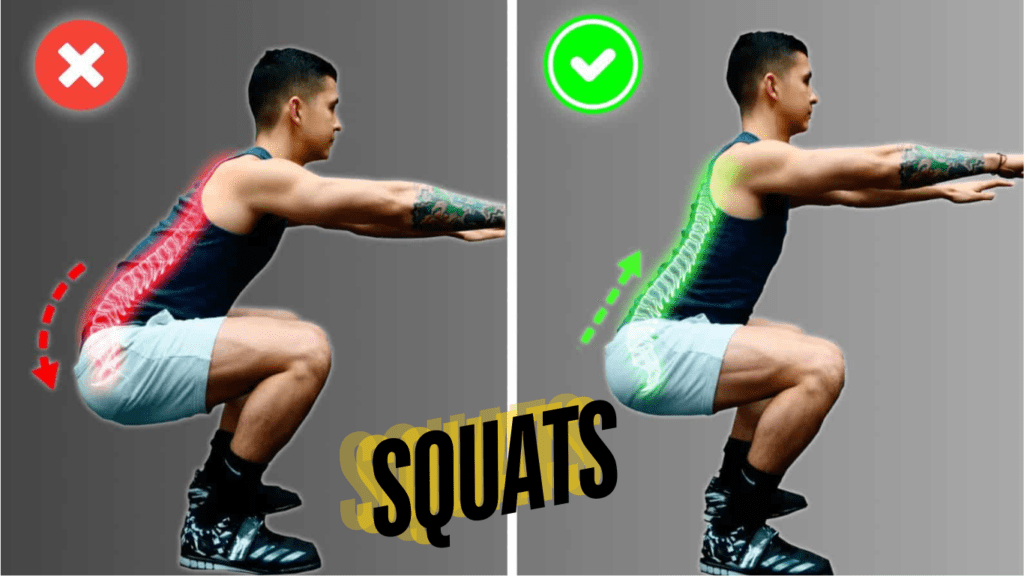
1,Squats: Stand with your feet shoulder-width apart, toes pointed slightly outward. Keeping your chest up and core engaged, lower your body down as if you’re sitting back into a chair, making sure to keep your knees in line with your toes. Once your thighs are parallel to the ground (or as close as you can get), push through your heels to return to the starting position. Repeat for reps.
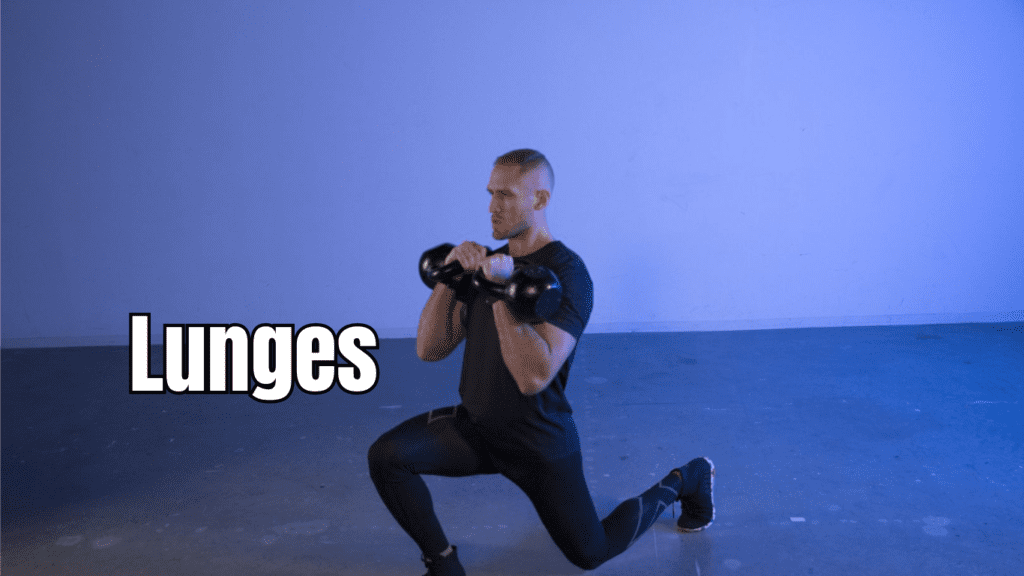
2.Lunges: Stand with your feet hip-width apart, hands on your hips. Take a big step forward with your right foot, lowering your body down until both knees are bent at a 90-degree angle. Push through your right heel to return to the starting position, then repeat on the other side. Alternate legs for reps.

3. Deadlifts: Stand with your feet hip-width apart, knees slightly bent, holding a barbell or dumbbells in front of your thighs with an overhand grip. Keeping your back flat and core engaged, hinge at the hips to lower the weights down toward the ground, keeping them close to your body. Once you feel a stretch in your hamstrings, squeeze your glutes to return to the starting position. Repeat for reps.
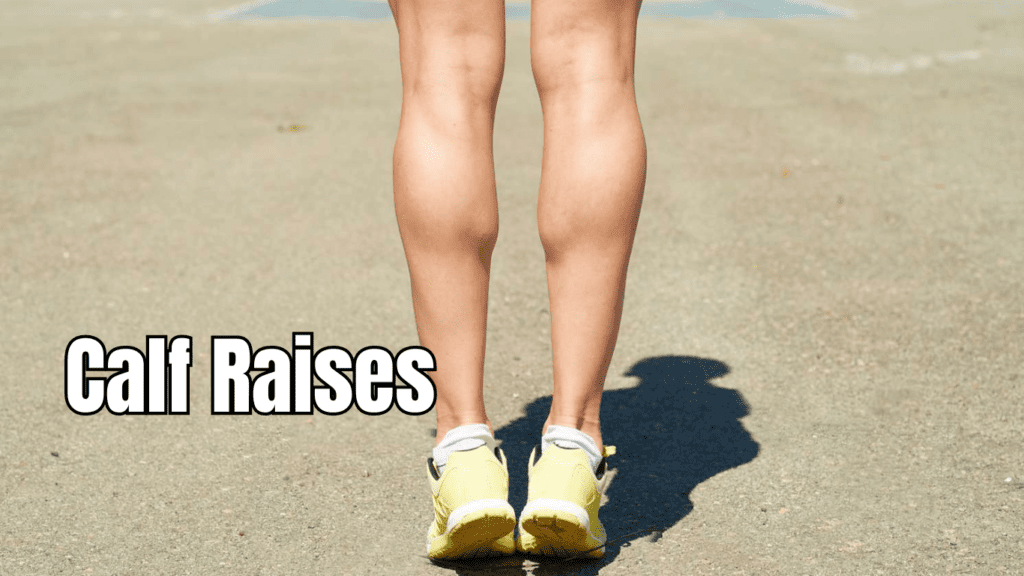
4. Calf Raises: Stand with your feet hip-width apart, hands on your hips or holding onto a sturdy surface for balance. Rise up onto the balls of your feet as high as you can, then lower back down to the starting position. Repeat for reps.
Key Leg Exercises for Lower Back Pain Relief
| Exercise | Targeted Muscles | Benefits | How to Perform |
|---|---|---|---|
| Squats | Quadriceps, Hamstrings, Glutes | Strengthens leg muscles, improves stability and posture | 1. Stand with feet shoulder-width apart. 2. Lower body as if sitting back into a chair. 3. Keep knees in line with toes. 4. Push through heels to return to starting position. |
| Lunges | Quadriceps, Hamstrings, Glutes | Improves balance, strengthens leg muscles | 1. Stand tall, step forward with one foot. 2. Lower body until both knees are bent at 90 degrees. 3. Push through front heel to return to standing. |
| Deadlifts | Hamstrings, Glutes, Lower Back | Strengthens lower back and leg muscles, improves posture | 1. Hold weights in front of thighs. 2. Hinge at hips, lowering weights toward ground. 3. Keep back flat and core engaged. 4. Push through heels to return to standing. |
| Calf Raises | Calves | Improves calf strength, supports lower body stability | 1. Stand with feet hip-width apart. 2. Rise onto balls of feet, lifting heels as high as possible. 3. Lower heels back down with control. |
And there you have it, folks: a killer leg workout routine designed specifically to target lower back pain.
Sample Leg Workout Routine
Alright, folks, let’s dive into the good stuff: sample leg workout for lower back pain routines. Whether you’re just starting out on your fitness journey, somewhere in the middle, or a seasoned pro looking to take things up a notch, I’ve got a routine for you. So grab your water bottle and let’s get started!
For all you beginners out there, I’ve got a beginner-friendly routine that’ll have you feeling like a fitness superstar in no time. We’re going to start slow and steady, focusing on building strength and stability in those legs while also giving your lower back some much-needed TLC.
Beginner Routine for Leg Workout for Lower Back Pain:
- Bodyweight Squats: Let’s kick things off with everyone’s favorite leg exercise – squats! Stand with your feet shoulder-width apart, chest up, and core engaged. Lower your body down as if you’re sitting back into a chair, keeping your knees in line with your toes. Push through your heels to return to the starting position. Aim for 3 sets of 10-12 reps.
- Reverse Lunges: Next up, we’ve got reverse lunges. Start by standing tall with your feet hip-width apart. Step back with one foot and lower your body down until both knees are bent at a 90-degree angle. Make sure your front knee stays directly above your ankle. Push through your front heel to return to standing. Do 3 sets of 10-12 reps on each leg.
- Glute Bridges: Time to work those glutes! Lie on your back with your knees bent and feet flat on the ground. Squeeze your glutes and lift your hips up towards the ceiling, making sure to keep your core engaged and your lower back pressed into the ground. Lower back down with control. Aim for 3 sets of 12-15 reps.
- Calf Raises: Last but not least, let’s give those calves some love. Stand with your feet hip-width apart and rise up onto the balls of your feet, lifting your heels as high as you can. Hold for a moment at the top, then lower back down with control. Do 3 sets of 15-20 reps.
Now, for you intermediate folks who are ready to kick things up a notch, I’ve got a routine that’ll challenge you while still keeping your lower back happy and healthy.
Intermediate Leg Workout Routine for Lower Back Pain:
- Goblet Squats: Grab a dumbbell or kettlebell and hold it at chest height. Stand with your feet shoulder-width apart and toes slightly turned out. Lower down into a squat, keeping your chest up and your core engaged. Push through your heels to return to standing. Aim for 4 sets of 8-10 reps.
- Walking Lunges: Step forward with one foot and lower down into a lunge, making sure both knees are bent at a 90-degree angle. Push through your front heel to return to standing, then step forward with the other leg and repeat. Do 4 sets of 10-12 reps on each leg.
- Romanian Deadlifts: Grab a barbell or pair of dumbbells and hold them in front of your thighs with an overhand grip. Hinge at the hips and lower the weights down towards the ground, keeping your back flat and your core engaged. Push through your heels to return to standing. Aim for 4 sets of 8-10 reps.
- Single-Leg Calf Raises: Stand on one foot with the other foot lifted slightly off the ground. Rise up onto the ball of your foot as high as you can, then lower back down with control. Do 4 sets of 12-15 reps on each leg.
And finally, for all you advanced fitness maniacs out there who aren’t afraid to push your limits, I’ve got a routine that’ll have you sweating bullets and feeling the burn in all the right places.
Advanced Leg Workout Routine for Lower Back Pain:
- Barbell Back Squats: Load up a barbell on your shoulders and stand with your feet shoulder-width apart. Lower down into a squat, keeping your chest up and your core engaged. Push through your heels to return to standing. Aim for 5 sets of 5 reps.
- Bulgarian Split Squats: Stand with one foot elevated behind you on a bench or step. Lower down into a lunge, making sure both knees are bent at a 90-degree angle. Push through your front heel to return to standing. Do 4 sets of 6-8 reps on each leg.
- Deadlifts: Grab a barbell or pair of dumbbells and hold them in front of your thighs with an overhand grip. Hinge at the hips and lower the weights down towards the ground, keeping your back flat and your core engaged. Push through your heels to return to standing. Aim for 5 sets of 5 reps.
- Box Jumps: Stand in front of a sturdy box or platform. Jump up onto the box and land softly on the other side, then step or jump back down. Do 4 sets of 8-10 reps.
And there you have it, folks: three sample leg workout routines for lower back pain, tailored to suit every fitness level. Whether you’re just starting out, somewhere in the middle, or a seasoned pro, there’s a routine here for you.
Additional Tips for Managing Lower Back Pain
Alright, folks, let’s wrap things up with some additional tips for managing that pesky lower back pain. Because let’s face it, nobody likes waking up in the morning feeling like they’ve been hit by a truck (or at least, I don’t).
First and foremost, let’s talk about lifestyle changes. Now, I’m not saying you need to overhaul your entire life overnight, but there are a few simple tweaks you can make that’ll go a long way towards easing that lower back pain. For starters, maintaining a healthy weight is key. Carrying around extra pounds puts added stress on your spine, so shedding those excess pounds can help alleviate some of that pressure. Plus, eating a balanced diet rich in fruits, vegetables, and lean proteins can help reduce inflammation and support overall spinal health.
Next up, let’s talk about posture. Now, I know we’ve all heard our parents harping on about sitting up straight and not slouching, but turns out they were onto something. Poor posture can wreak havoc on your spine, leading to all sorts of aches and pains, including lower back pain. So, make a conscious effort to sit and stand up straight, with your shoulders back and your chin tucked in. It might feel a little weird at first, but trust me, your back will thank you later.
But Henry, you might be thinking, what about other forms of exercise? Ah, my dear reader, that’s where things get interesting. While leg workout for lower back pain is all well and good, incorporating other forms of exercise into your routine can help keep things interesting while also providing additional benefits for your lower back. Take yoga, for example. Not only does it help improve flexibility and strength, but it also promotes relaxation and stress relief, both of which can help alleviate lower back pain. And let’s not forget about swimming. The buoyancy of the water takes the pressure off your joints while still providing a killer full-body workout. Plus, it’s easy on the ol’ lower back, making it a win-win in my book.
But here’s the thing, folks: before you go jumping into any new exercise regimen, it’s important to consult with a healthcare professional, especially if you have pre-existing medical conditions. Your doctor or physical therapist can help tailor a workout plan to your specific needs and limitations, ensuring you get all the benefits of exercise without any of the risks.
So there you have it, folks: some additional tips for managing that pesky lower back pain. From maintaining a healthy weight to improving posture to incorporating other forms of exercise like yoga or swimming, there’s plenty you can do to keep that lower back happy and healthy. Just remember to listen to your body, take things slow, and always consult with a healthcare professional before making any big changes. Now go forth and conquer, my friends. Your lower back will thank you later.
Final Words
let’s tie everything together and wrap up our discussion on leg workout for lower back pain. Throughout our journey, we’ve covered a lot of ground, from understanding the causes of lower back pain to learning about the benefits of incorporating targeted leg exercises into our fitness routine. So, let’s do a quick recap and then send you off with some final thoughts.
First and foremost, we discussed how strengthening the leg muscles can provide essential support to the lower back, alleviating pain and improving overall spinal health. By targeting key muscle groups such as the quadriceps, hamstrings, glutes, and calves, these exercises help maintain proper posture, stability, and spinal alignment.
We also explored common causes of lower back pain, such as weak leg muscles, poor posture, and muscle imbalances. Understanding these factors is crucial in developing an effective strategy for managing and preventing lower back pain.
Throughout our discussion, we emphasized the importance of proper form, gradual progression, and listening to your body when performing leg exercises for lower back pain. Consistency and patience are key, as is consulting with a healthcare professional before starting any new exercise regimen, especially for individuals with pre-existing medical conditions.
Now, here’s the fun part: encouraging you to take action! I want to urge you to incorporate the recommended leg exercises into your fitness routine. Whether you’re a beginner, intermediate, or advanced fitness enthusiast, there’s a routine that’s tailored just for you. These exercises aren’t just about building muscle or burning calories – they’re about improving your quality of life and finding relief from lower back pain.
So, lace up those sneakers, grab your water bottle, and let’s get to work. Your lower back will thank you later. And hey, don’t forget to share your experiences in the comment section below. I’d love to hear how these exercises are working for you and what other tips and tricks you’ve found helpful in managing lower back pain.
And lastly, if you’ve enjoyed this discussion and found it helpful, don’t forget to subscribe for more tips, tricks, and workouts from yours truly. Together, we can conquer lower back pain and achieve our fitness goals. Until next time, keep moving, keep smiling, and take care of that lower back. Henry, signing off.

